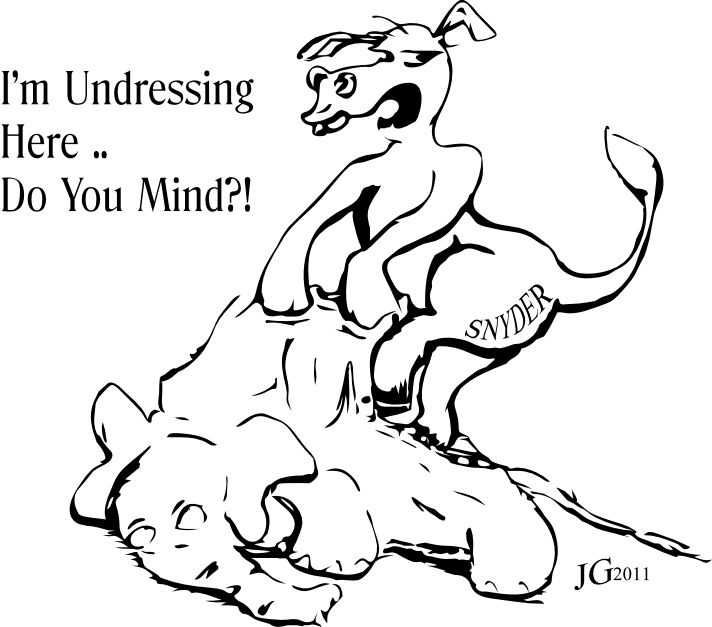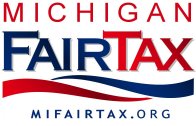
 |
NAVIGATION
|
NEWS TIPS!RightMichigan.com

Who are the NERD fund donors Mr Snyder?Tweets about "#RightMi, -YoungLibertyMI, -dennislennox,"

 |
Continuing to Beat the FairTax Drum - Taxation and Jobs PreventionBy Kevin Rex Heine, Section News
(Promoted by Nick...)
Michigan TEA Party activists, a growing movement across the state, convened near Lansing on Saturday, June 13th, 2009, to hear speakers, learn about grassroots activism, and show a sense of support for possible 2010 ballot initiatives. The Michigan FairTax Proposal (MFTP) was selected by the majority of voting delegates as the proposal of choice to unify behind and support, from amongst four suggested initiatives. The MI FairTax focuses on job creation and economic growth by changing the method and structure of the state's tax system from taxing income to taxing retail consumption. In my first essay in this series, "The Government's Authority to Tax," I mentioned that all arguments to the contrary aside, the government (federal, state, and by extension local) does have the constitutional authority to levy and collect taxes. The secret to permanently reforming the government lies in constitutionally restricting its ability to tax at will. While this will be difficult to accomplish at the federal level, the Michigan FairTax Proposal makes this something readily doable at the state level. But the government's misuse of its legitimate authority is not the only reason to support and pass the MFTP; and with this in mind, I present the second essay the "Continuing to Beat the Fair Tax Drum" series here (with a hat-tip to John Crawford for the basic idea):

Every firefighter is familiar with the fire triangle, which is a pictorial representation of the chemical and physical interactions required to ignite and sustain a fire. In essence, the fire triangle involves three things:
By extension, then, the essence of fire prevention (whether at home or at work or traveling) is keeping the three legs of the fire triangle as far apart as possible, or keeping one of the legs out of the environment entirely. Granted, we don't usually think of it that way, but that is what we're doing. This is because fire is inherently dangerous, safe only under carefully controlled conditions, normally in which one of the three legs of the fire triangle is carefully regulated. This picture of the fire triangle is easily adapted to pictorially represent another complex interaction. A "jobs triangle" represents the economic dynamic required to create and sustain employment in any given market, and consists of . . .
On January 1, 1991, John Engler succeeded Jim Blanchard as Michigan's Governor; inheriting a state workforce of 4,588,849 and an unemployment rate of 8.3% (1 of every 12 members of the Michigan workforce weren't employed full-time). His administration was characterized by policies designed to ignite Michigan's economy by producing a sustainable jobs environment. And in this he was successful, because during his third term, Governor Engler's policies had actually grown the state's workforce up to 5,174,837 (January 2001) and driven the unemployment rate down to 3.2% (Feb & Mar 2000). I'll point out that both of those growth numbers are the state records since the Bureau of Labor Statistics started keeping state-by-state statistics in 1976. The key here is that not only had the state's workforce expanded by over a half-million workers (585,988), but also unemployment was so low (~ 1 / 31 not employed full-time) that in effect a job was available to anyone who wanted one. When Governor Engler left office on January 1, 2003, Michigan's economy might not have been ablaze with jobs, but it was still in pretty good shape! When Jennifer Granholm arrived on the scene as Michigan's Governor, the situation was completely out of control. Jobs were everywhere, and the state's economy was solid, robust, and expanding (or at least two out of the three). However, the intrepid Canadian jobs fighter quickly assessed the situation and determined which of the three legs of the triangle needed to be removed in order to most rapidly and thoroughly extinguish the jobs in Michigan. The Governess accurately determined that the most effective method of jobs extinguishment would be to drive business capital from this state as quickly as possible. And in this she has been so amazingly successful that Michigan's current workforce numbers only 4,871,589 (though it was as low as 4,841,297 in March of this year), and unemployment is now up to 15.2%. Fifteen-point-two percent, as a fraction, is about 1 out of every 6.5 members of the workforce that aren't employed full-time. It isn't the state record of 16.9% (achieved in November of 1982), but at this rate, we just may see that as Governor Granholm's Halloween present to the Michiganders that are still hanging around these here parts . . . if not sooner. Right now, even Puerto Rico has a better jobs market than Michigan, and that trend may continue for awhile yet. So what changed? What was the extinguishing agent that Governor Granholm applied which so effectively chased business capital from Michigan? Governor Engler ignited Michigan's economy by adopting policies of state services privatization, tax reduction, educational reform, welfare reform, and conducting a major reorganization of executive branch departments. Granholm, on the other hand, wasted very little time reversing most of those policies as quickly as possible. With business capital driven from this state, jobs inevitably have also been driven out. As a result . . . well, we now have the worst unemployment rate in the nation, and have led the nation in outbound interstate relocation for the past three years. Evidently, Governor Granholm believes that jobs are inherently dangerous, and are safe only under carefully controlled conditions. As proof, I'll refer to an April 22, 2008 news story in which MPI Research Partners announced that they would be starting up a downtown Kalamazoo facility that would create somewhere around 3,300 jobs locally, about that many in the surrounding county, plus provide a bunch of indirect employment opportunities due to their economic impact. Also in that news story was cited that in order to attract that facility, Governor Granholm had to sign off on an 86 million dollar tax break spanning the next ten years. Did I miss something here, or did she admit - on the record - that the most reliable way to attract business capital to Michigan is to relieve it of the burden of business taxation? Come on, what did I miss? And while I'm at it, how is the state going to make up for that revenue hole? Nor should anyone think that this is an isolated incident, as even a cursory review of 6-1/2 years of Governor Granholm's press releases announcing companies and jobs reveals invariably a tax break of some sort mentioned in the text somewhere. This, of course, proves a critical point. Michigan's economy is being taxed into the ground, and that absolutely must stop if we are to ever permanently solve this state's economic issues. The current state tax system penalizes Michiganders (businesses included) for working more effectively and becoming more successful. As we each climb the ladder of success, our own state government continually takes a bigger bite out of our earnings, property, and savings. So no matter how hard Michiganders work, no matter how innovative and creative we are, no matter how superior the products we produce and services we provide, we are ultimately hamstrung by the built-in competitive disadvantage of our state tax system. Why? Honestly, given the hassles associated with the tax filing and reporting process, the endless reams of forms and paperwork, and the cumbersome rules and Byzantine changes, don't you think it's time to stand up and say, "Enough already!"? I certainly do. If we can attract the business capital of one company, and at least 6,000 jobs, by providing a temporary business tax break, then how many companies might we attract, and how many jobs might they bring with them, if we permanently eliminated all Michigan business taxation? Seriously, why are we still fiddling around choosing economic winners and losers with a tax system that created the very mess that Michigan is in? According to Albert Einstein, "We can't solve problems by using the same kind of thinking we used when we created them." Even though the size of Michigan's workforce is only about 93% of what it was ten years ago, we still have a workforce in this state . . . for the time being. And even a quick glance around shows that we still have roads, utilities, buildings, and emergency services . . . for now. But the chief executive in Lansing is practicing an aggressive jobs prevention program, pushing the legs of the jobs triangle as far apart as possible, and the employment market trends indicate that she is doing so very effectively. However, in order to bring jobs back to Michigan, we merely need to attract more business capital. To extend the analogy that I made in the beginning of this essay, business capital is the wild card of the jobs triangle in the same manner that oxygen is the wild card of the fire triangle. In other words, the more business capital is running loose in a given economic market, the less workforce and infrastructure is necessary to create jobs. That's because business capital is quite capable of attracting a workforce all on its own, provided it has a "core" to start with. And business capital can construct its own infrastructure, provided it has a "backbone" to hook into. And the State of Ohio gets this. In 2005, the Ohio Business Development Coalition recommended, and the state government adopted, a full-scale, sweeping tax reform that will reduce business taxation up to 63 percent by 2010, and ultimately eliminate all state business taxation entirely! The State of Missouri also gets it. In April of this year, the Missouri State House of Representatives passed HJR-36 - the Missouri FairTax Proposal - by a margin of 90 to 65 (with one voting "present"), and reported the measure to the State Senate. Though there has been no action since May, the expectation is that HJR-36 will pass out of the Senate with enough votes to place it on the Missouri General Ballot for November 2010. So why doesn't Michigan get it? Nevada, Texas, and Wyoming get it (and to a lesser extent, so do Alaska, Florida, New Hampshire, South Dakota, Tennessee, and Washington) . . . why don't we? Americans know how to stimulate an economy. It isn't through government growth; it's by incentivizing the private sector. We do that by reducing the financial burden, cutting taxes, and removing unnecessary regulations. So why don't we in Michigan get that? Well, we do actually. And the solution has been before the state's legislature since May of 2007. The Michigan FairTax Proposal permanently does away with all state business taxation . . . all of it. Goodbye to the Business Income Tax, Michigan Business Tax (and the surcharge), Business Personal Property Tax, State Education Tax on businesses, Business-to-Business Sales Tax, and every other form of state business taxation. Governor Granholm has proven time and again that relieving business of its tax burden is the surest way to attract business capital to Michigan. Why, then, don't we just go all the way and get rid of all of it . . . for good?
Continuing to Beat the FairTax Drum - Taxation and Jobs Prevention | 41 comments (41 topical, 0 hidden)
Continuing to Beat the FairTax Drum - Taxation and Jobs Prevention | 41 comments (41 topical, 0 hidden)
|
Related Links+ The Government's Authority to Tax+ fire triangle + normal atmospheric concentration + Fire Safety + Camping + John Engler + Bureau of Labor Statistics + Jennifer Granholm + Puerto Rico + Ohio Business Development Coalition + Missouri FairTax Proposal + get it + Also by Kevin Rex Heine |